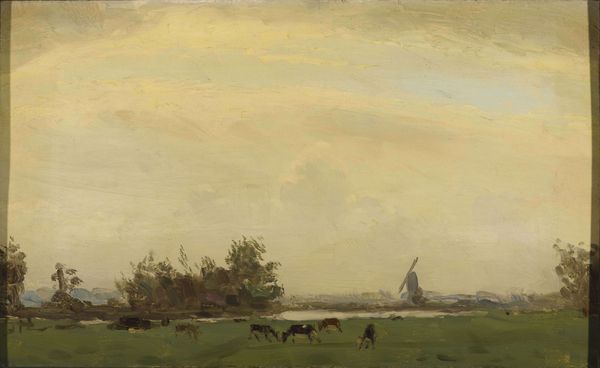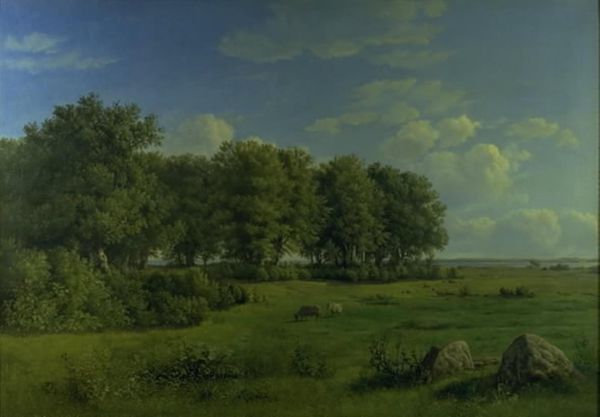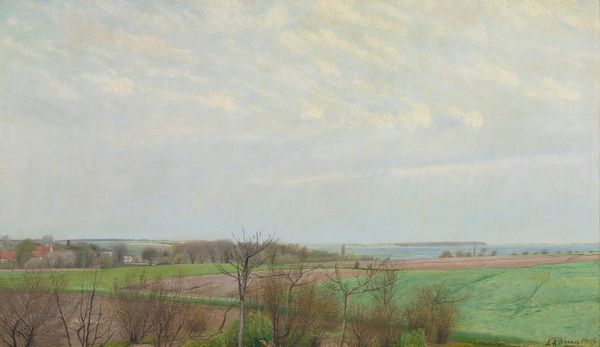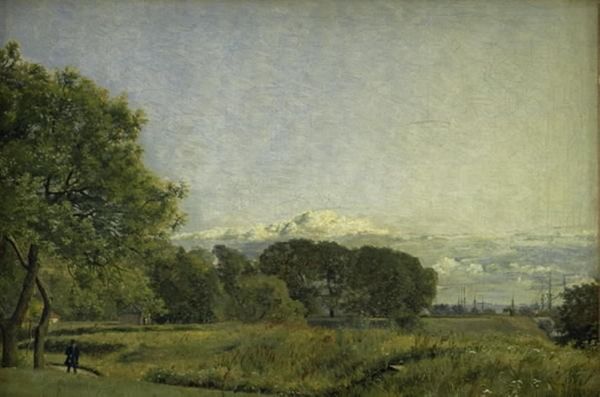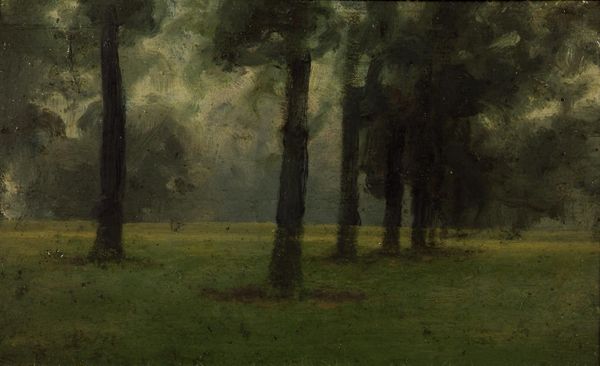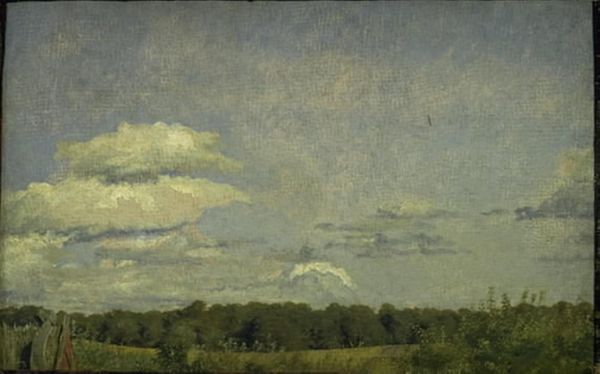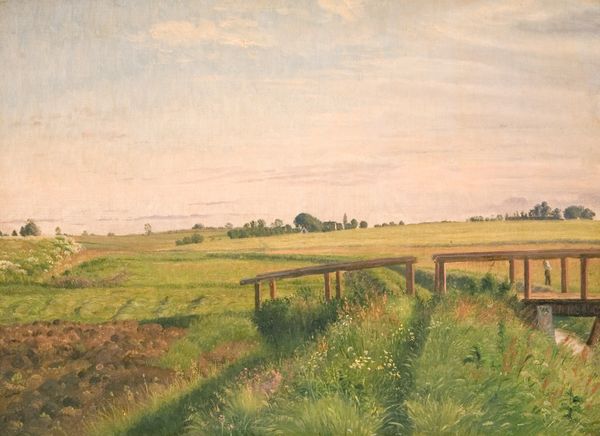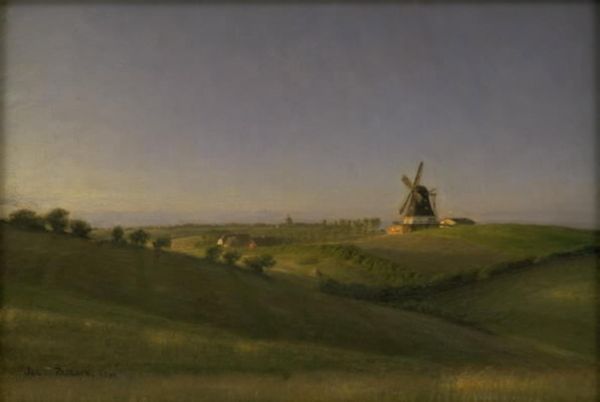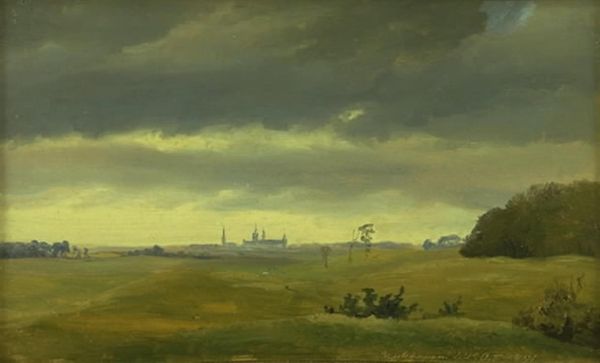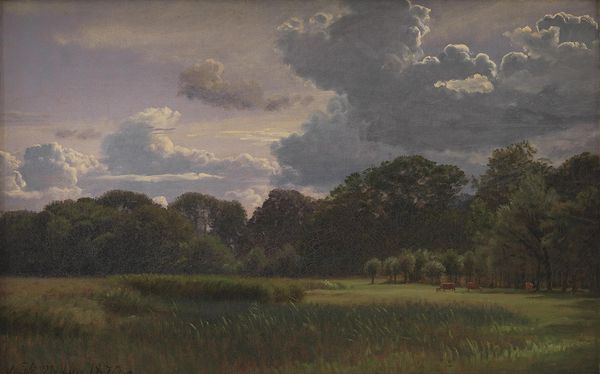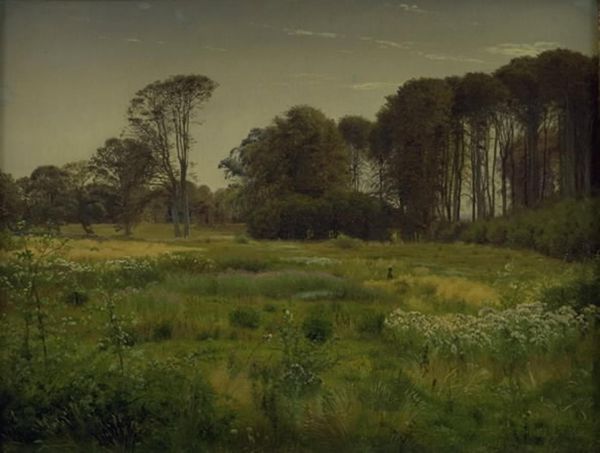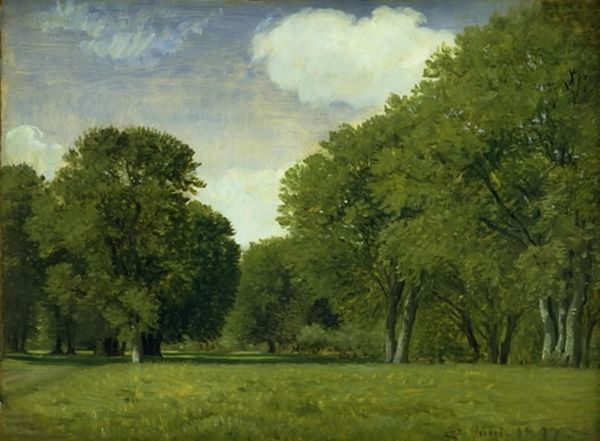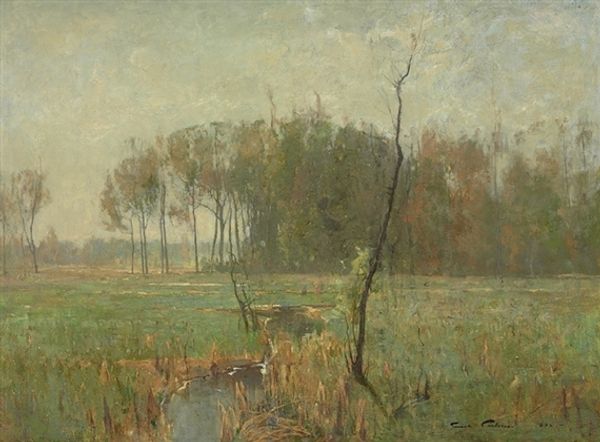
The Meadow near the Artist's House at Farimagsvej outside Copenhagen 1855
0:00
0:00
Dimensions: 27.5 cm (height) x 37 cm (width) (Netto), 36.9 cm (height) x 48.5 cm (width) x 5.8 cm (depth) (Brutto)
Editor: So, here we have Vilhelm Kyhn’s 1855 oil painting, "The Meadow near the Artist's House at Farimagsvej outside Copenhagen." I’m immediately struck by the subdued, almost melancholic mood. The color palette feels muted, and the composition seems to emphasize the vastness of the landscape. What’s your take on this work? Curator: This piece invites us to consider the relationship between landscape, national identity, and industrial change in 19th-century Denmark. Kyhn was invested in creating specifically Danish landscapes at a time when national romanticism was politically charged. Note the windmill; it's a traditional symbol, but placed within a scene inevitably undergoing modernization as Copenhagen expanded. Editor: I see what you mean. It's not just a pretty scene; it's about a specific time and place facing a tension between the old and new. So, how does the romantic style play into this tension? Curator: Precisely. While formally realist in technique, Kyhn infuses it with a soft, idealized light. Romanticism here is not just aesthetic, but a strategic tool. Consider who owns land, and who profits from its produce. How might an idealized landscape obscure contemporary issues such as agricultural labor or urbanization? Who is allowed access to that pretty scenery, and who is excluded? Editor: That’s fascinating. I never would have thought about the politics embedded within the idyllic setting. So, his decision to paint en plein air suggests what, exactly? An attempt at capturing reality? Curator: Partly, yes, capturing a sense of immediacy, of lived experience, in contrast to studio-bound, academic conventions. This 'return to nature' was inherently about returning to a sense of national 'authenticity' – but again, we must be critical. Authenticity for whom? Editor: That makes me see this seemingly simple landscape in a totally new way. Thanks! Curator: Absolutely, seeing art as entangled with history opens our understanding to new readings, every time!
Comments
No comments
Be the first to comment and join the conversation on the ultimate creative platform.
